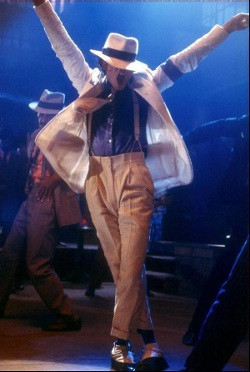When Michael Jackson passed away in June 2009, it was during a significant event for dance critics – a National Endowment for the Arts symposium at Duke University. This gathering, an annual “Institute” at the American Dance Festival, was a deep dive into dance as a serious art form, designed for experts in the field.

The news of Jackson’s death arrived one evening after class via the internet. The impact was profound. Overwhelmed, I found myself, along with other dance writers present, deeply moved by the loss.
One might expect that Michael Jackson, the dancer, would become a central topic of discussion the following day. Despite being “untrained” in a conventional sense, Jackson was undeniably one of the most influential performers and greatest dancers of the 20th century. He brought dance to more people’s attention than perhaps all ballet companies combined. Yet, his passing received minimal acknowledgment. The discussions instead remained focused on canonical figures like Merce Cunningham, Mark Morris, and emerging artists from the downtown Manhattan scene.
While Jackson’s personal life was complex, the primary reason for this critical oversight seemed to be the “pop” element in his title “King of Pop.” This label appeared to place him outside the realm of serious artistic consideration for many in the dance establishment.
Michael Jackson, it’s a regret that the dance community I was part of didn’t fully recognize your immense talent and impact as a dancer. Witnessing “This is It,” Kenny Ortega’s documentary of your rehearsals, revealed the sheer artistry with which music and movement flowed from you. It was breathtaking. You embodied the dedication and creative energy that dance critics seek in live performances. Why attend a formal dance performance when such captivating artistry existed in Michael Jackson’s work?
“This is It” showcased not just extraordinary talent and dance ability but also Jackson’s deep respect for his audience. His personal struggles and tragic death, while significant, shouldn’t overshadow his artistic contributions.
The separation between “commercial” and “art-world” dance increasingly appears outdated and detrimental to the art form itself. Jack Cole, who transitioned from Denishawn to choreographing for film and nightclubs, was a pivotal figure in bridging this gap. Similarly, seeing Jerome Robbins’s choreography in “West Side Story” captivate a cinema audience highlights the power of popular, explosive, and accessible dance.
Explore the dance clips of Michael Jackson. He and his collaborators elevated video dance to an art form. There’s no need to feel self-conscious about enjoying them. Michael Jackson’s artistry was profound and would have resonated even within avant-garde spaces like The Kitchen. In fact, Kyle Abraham, an artist who carries forward some of Michael Jackson’s innovative spirit, has performed at venues like The Kitchen.
